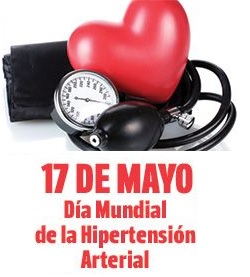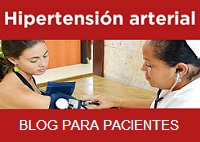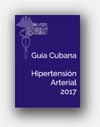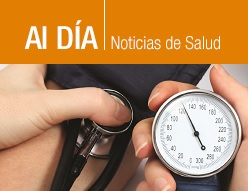 Por: A Januszewicz, E Ritz, G Viberti, A Mimran, A J Rabelink, L C Rump, L M Ruilope, S Katayama, S Ito, J L Izzo Jr. y H Haller. Journal of Human Hypertension (2011) 25, 679–685.
Por: A Januszewicz, E Ritz, G Viberti, A Mimran, A J Rabelink, L C Rump, L M Ruilope, S Katayama, S Ito, J L Izzo Jr. y H Haller. Journal of Human Hypertension (2011) 25, 679–685.
Para investigar la asociación entre las consultas y el metodo ambulatorio de 24 horas de la presión del pulso (PP), con características clínicas y factores de riesgo cardiovascular con pacientes del tipo de normoalbuminúricos 2 y en pacientes diabéticos que toman olmesartán de manera aleatoria, se realizó un estudio para la prevención de la microalbuminuria en 4449 pacientes (2054 hombres y 2395 mujeres, con una media edad 57.7 ± 8.7 años) con diabetes tipo 2, normoalbuminuria y al menos un factor de riesgo cardiovascular adicional se incluyeron en el análisis.
Prehypertension and the Continuum of Stroke Risk
Prehypertension, especially in the higher range, is associated with incident stroke.
To assess whether so-called prehypertension is associated with incident stroke, researchers
conducted a meta-analysis of prospective cohort studies. The analysis included 518,520
participants from 12 studies originating in the U.S., China, Japan, and India. Prehypertension was
defined as systolic blood pressure of 120–139 mm Hg or diastolic blood pressure of 80–89 mm Hg.
In seven of the studies, prehypertension was further subdivided into a low range (120–129 mm Hg
systolic or 80–84 mm Hg diastolic) and a high range (130–139 mm Hg systolic or 85–89 mm Hg
diastolic).
Overall, prehypertension was associated with a significantly increased risk for stroke (relative risk,
1.55) that was driven by higher-range prehypertension (RR, 1.79). Lower-range prehypertension was
not significantly associated with increased stroke risk. In subgroup analyses by baseline
characteristics, the association was not affected by race/ethnicity, stroke endpoint (fatal vs. all
stroke), stroke subtype (ischemic vs. hemorrhagic), or follow-up duration (<10 vs. ≥10 years). The
association did not remain significant for people older than 65 and when study quality was only
“fair.”
The authors conclude that prehypertension, especially in the higher range, is associated with incident stroke.
Hypertension is associated with stroke on a continuum of risk (Lancet Neurol 2002; 1:149). For example, mild, moderate, and severe hypertension are all associated with stroke risk, with the
highest relative risk for stroke among those with the highest blood pressure, and the greatest
absolute number of strokes in those with mild or “high-normal” blood pressure, a designation that
includes prehypertension. The current findings support the concept of a continuum of risk for stroke
with increasing blood pressure, especially among patients with higher-range prehypertension.
However, whether lowering blood pressure in the prehypertension range will reduce stroke risk
remains uncertain; this hypothesis deserves additional efficacy, safety, and cost-effectiveness
testing. Currently, rigorous lifestyle modification is recommended for people with prehypertension. A
blood pressure target <130/80 mm Hg has been recommended for those with, for example, diabetes
mellitus, chronic renal disease, or carotid artery disease and for those with 10-year Framingham risk scores of ≥10% (Circulation 2007; 115:2761).
(Fuente: neurology.jwatch.org)
La enfermedad renal es la patología concomitante que más empeora la calidad de vida relacionada con la salud de los pacientes hipertensos, según revela el trabajo ‘Influencia del riesgo cardiovascular y factores predictores de la calidad de vida en pacientes hipertensos. Estudio Alhambra’, presentado recientemente en Sevilla, en el marco del ‘XLI Congreso Nacional de la Sociedad Española de Nefrología’.
El objetivo de este estudio, al que ha tenido acceso Europa Press, ha sido precisamente el de establecer la relación entre la calidad de vida relacionada con la salud y el nivel de riesgo cardiovascular, además de estudiar los factores predictores de esta calidad de vida relacionada con la salud en una población de pacientes hipertensos españoles.
Para tal fin, sus autores llevaron a cabo un estudio epidemiológico, transversal, multicéntrico y nacional en pacientes adultos con hipertensión arterial esencial con al menos un año de evolución.
La estratificación del riesgo cardiovascular (RCV) se realizó agrupando a los pacientes en cinco estratos en los próximos 10 años (RCV promedio, adicional bajo, adicional moderado, adicional alto y adicional muy alto), según cifras de presión arterial, presencia de factores de RCV, enfermedades concominantes, lesiones orgánicas subclínicas o patología cardiovascular o renal establecida.
La calidad de vida relacionada con la salud se determinó mediante el cuestionario MINICHAL, que evalúa las dimensiones del estado de ánimo y las manifestaciones somáticas en los últimos siete días, siendo las puntuaciones más elevadas indicativas de peor calidad de vida relacionada con la salud.
Además, se realizó un análisis de agresión múltiple para determinar factores predictores de esta calidad de vida, incluyendo como variables independientes las patologías concomitantes, entre otras.
Esta investigación incluyó a 6.654 pacientes evaluables (55,2% de varones), con una edad media de 62,7 años y con una media de años transcurridos desde el diagnóstico de la hipertensión arterial de 7,9 años. Al analizar los datos, un 3,5 por ciento presentó riesgo cardiovascular promedio, un 13,6 por ciento adicional bajo, un 12,8 por ciento adicional moderado, un 39 por ciento adicional alto y un 31 por ciento adicional muy alto.
Del mismo modo, los autores de esta investigación observaron un aumento progresivo en las puntuaciones de las dos dimensiones del cuestionario a mayor riesgo cardiovascular tuvieran los pacientes.
Según el análisis multivariado, el factor que más influyó negativamente en la calidad de vida relacionada con la salud del paciente hipertenso fue la presencia de enfermedad renal. También empeoró esta calidad de vida, aunque en menor grado, la presencia de obesidad, de diabetes o de enfermedad cardiovascular.
Por todo ello, los investigadores de este trabajo concluyen que a mayor riesgo cardiovascular, “peor calidad de vida presentan los pacientes hipertensos, tanto a nivel emocional como somático”. Entre las variables analizadas, la enfermedad renal “es la patología concomitante que más empeora la calidad de vida relacionada con la salud de los pacientes hipertensos”.
(Fuente: Europapress.es)
I always remember my mother trying to teach me things I didn’t agree with. Being the bigmouth that I was (am), I would voice my disagreement, and she would tell me that, one day, I would tell my kids the same thing. I, of course, did not agree. I felt the same way about some of the tedious things I learned to do in medical school. I didn’t understand why my attending always made me recheck blood pressures on patients when I saw them, after a nurse had already done that precise thing. I would recheck the blood pressure and mindlessly report the measurement back to my staff. I started noticing that the levels were usually lower when I checked them again in the room, and I thought this was because I was so good at checking them.
The study regarding clinic-based BP measurement discusses this issue in more detail. It states that many people who are diagnosed with hypertension by clinic-based measurements alone are not truly hypertensive. It proves the validity of “white coat hypertension” and the importance of serial blood pressure measurements prior to initiation of therapy. If patients are not truly hypertensive, we are putting them at risk for hypotension with BP-lowering medications and subjecting them to risk for adverse effects and the associated cost-burden.
I was recently in clinic and asked my student what a patient’s blood pressure was when she rechecked it in the room — to which my student rolled her eyes and went back to check. I had to laugh — I realize how things really do come full circle.
(Fuente:blogs.jwatch.org)
 Por: Qi Zhao, MD, PhD, Dongfeng Gu, MD, PhD, James E. Hixson, PhD, De-Pei Liu, PhD, Dabeeru C. Rao, PhD, Cashell E. Jaquish, PhD, et, al. y for the Genetic Epidemiology Network of Salt Sensitivity Collaborative. Common Variants in Epithelial Sodium Channel Genes Contribute to Salt Sensitivity of Blood Pressure The GenSalt Study.pdf
Por: Qi Zhao, MD, PhD, Dongfeng Gu, MD, PhD, James E. Hixson, PhD, De-Pei Liu, PhD, Dabeeru C. Rao, PhD, Cashell E. Jaquish, PhD, et, al. y for the Genetic Epidemiology Network of Salt Sensitivity Collaborative. Common Variants in Epithelial Sodium Channel Genes Contribute to Salt Sensitivity of Blood Pressure The GenSalt Study.pdf
Rare mutations of the epithelial sodium channel (ENaC) lead to mendelian forms of salt-sensitive hypertension or salt-wasting hypotension. We aimed to examine the association between common variants in the ENaC genes and salt sensitivity of blood pressure (BP).
Los tratamientos antihipertensivos administrados en un paciente al acostarse reducen “significativamente” el riesgo cardiovascular en comparación a un tratamiento convencional matutino, y con independencia del fármaco utilizado, según revela un estudio de la Universidad de Vigo presentado recientemente en Sevilla en el marco del XLI Congreso Nacional de Nefrología.
Este trabajo, al que ha tenido acceso Europa Press, sostiene que cuando el tratamiento se administra al acostarse –en concreto los antagonistas de los receptores de la angiotensina II (ARA-II)–, “aumentan significativamente” la supervivencia sin evento cardiovascular con respecto a la utilización nocturna de cualquier otro fármaco.
De hecho, esta investigación partió de la premisa de que diversos ensayos clínicos ya han documentado diferencias en función de la hora de administración de las diferentes familias de antihipertensivos en su eficacia para reducir la presión arterial, la duración de acción, el perfil de seguridad y los efectos sobre el perfil circadiano de la presión arterial.
Además, aluden a los resultados del reciente estudio MAPEC, que también han documentado que la administración de uno más fármacos al acostarse, en comparación con la estrategia habitual de administrar toda la medicación al levantarse, mejora el control de la presión arterial, reduce la prevalencia del patrón ‘no-dipper’ y, sobre todo, reduce el riesgo cardiovascular.
Por ello, los autores de este estudio han evaluado la posible diferencia sobre la reducción de riesgo cardiovascular entre las diferentes familias de antihipertensivos utilizados en el estudio MAPEC.
Para tal fin, se analizó a un total de 2.156 personas hipertensos (1.044 hombres y 1.112 mujeres), que fueron aleatorizadas a tomar toda su medicación antihipertensiva al levantarse o a tomar uno o más fármacos al acostarse.
Esta aleatorización se hizo de forma independiente para cada fármaco permitido en el estudio, La presión arterial se monitorizó durante 48 horas consecutivas a la inclusión y de nuevo anualmente, o con mayor frecuencia (cada 3 meses) si era necesario ajustar el tratamiento antihipertensivo.
Entre los principales resultados extraídos de este trabajo, cuya mediana del tiempo de seguimiento fue de 5,6 año, fue que las personas tratadas con uno o más fármacos al acostarse evidenciaron un riesgo cardiovascular (ajustado por sexo, edad y diabetes) significativamente menor que los sujetos tratados al levantarse, con independencia de la familia de antihipertensivos utilizada para su tratamiento.
Del mismo modo, encontraron que “los mayores beneficios” se observaron con la administración al acostarse frente al levantarse y que, cuando el tratamiento se administró a la hora levantarse, el riesgo cardiovascular fue “similar para las diversas familias de antihipertensivos”. Sin embargo, cuando los fármacos se utilizaron al acostarse, los ARA-II fueron “significativamente superiores” en términos de reducción de riesgo cardiovascular a las demás familias.
Por todo ello, estos autores sostienen en su trabajo recogido por Europa Press que el tratamiento antihipertensivo administrado al acostarse “reduce significativamente el riesgo cardiovascular en comparación al tratamiento convencional matutino, con independencia del fármaco utilizado”.
Los resultados indican, además, que no existen ventajas significativas de una familia frente a otras en términos de reducción de riesgo cardiovascular cuando el tratamiento se administra al levantarse. Cuando el tratamiento se administra al acostarse, los ARA-II aumentan significativamente la supervivencia sin evento cardiovascular con respecto a la utilización nocturna de cualquier otro fármaco.
(Fuente: Tomado de la página de cardiocirguía de Infomed)
Quizás sea mejor tomar los antihipertensivos antes de irse a la cama
Un estudio muestra que los pacientes que lo hacían tenían una mejor salud cardiaca que los que seguían un horario matutino.
Millones de estadounidenses toman antihipertensivos, y un estudio reciente sugiere que tomárselos antes de irse a la cama podría ser lo mejor.
Se sabe que tomar antihipertensivos a distintas horas del día puede afectar los patrones de presión arterial de los pacientes, pero no se conocía el impacto sobre la salud.
El nuevo estudio español incluyó a 661 pacientes de enfermedad renal crónica e hipertensión. La mitad se tomaba el antihipertensivo recetado antes de irse a la cama y la mitad inmediatamente tras levantarse en la mañana.
Tras un seguimiento promedio de 5.4 años, los investigadores hallaron que los pacientes que tomaban al menos un antihipertensivo antes de acostarse tenían un mejor control de su presión arterial y tenían alrededor de un tercio menos de probabilidades de sufrir un evento relacionado con el corazón, como un ataque cardiaco, insuficiencia cardiaca o un accidente cerebrovascular.
El equipo de la Universidad de Vigo también halló que la presión arterial durante el sueño provee una medida mucho más precisa de la salud cardiaca que la presión arterial durante la vigilia.
El estudio aparece en la edición en línea del 24 de octubre de la revista Journal of the American Society of Nephrology.
“Nuestros resultados indican que las tasas de eventos cardiovasculares en los pacientes de hipertensión se pueden reducir en más de 50 por ciento con la estrategia sin costo alguno de administrar los antihipertensivos antes de irse a dormir en lugar de en la mañana”, escribió el autor del estudio Ramón Hermida en un comunicado de prensa de la revista.
Un médico de EE. UU. dijo que aprovechar la “cronoterapia”, o sea programar la administración de fármacos según los biorritmos de un paciente, podría tener un valor real.
“Los médicos por lo general no especifican a qué hora del día los pacientes deben tomar sus medicamentos. Sin embargo, la mayoría de pacientes de hipertensión se toman sus antihipertensivos por la mañana. Con frecuencia, los pacientes se quejan de efectos secundarios al tomar estos medicamentos, y los más comunes son fatiga y somnolencia”, anotó el Dr. Robert Graham, internista del Hospital Lenox Hill en la ciudad de Nueva York.
Cree que el estudio revela un “abordaje sin costos en que todos salen ganando” con una mejor adherencia a los antihipertensivos y una mayor eficacia cuando se toman en la noche en lugar de la mañana. “Como resultado, la cronoterapia podría ayudar a minimizar los efectos secundarios y maximizar los efectos beneficiosos de los antihipertensivos”, aseguró Graham.
Otro experto estuvo de acuerdo.
“La idea del uso nocturno de los medicamentos no es nueva”, apuntó el Dr. Howard S. Weintraub, director clínico del Centro de Prevención de la Enfermedad Cardiovascular del Centro Médico Langone de la NYU, en la ciudad de Nueva York. “Esta estrategia podría ser particularmente eficaz en el uso de [antihipertensivos como] los inhibidores de la ECA, los bloqueantes del receptor de la angiotensina o los inhibidores directos de la renina”.
Weintraub añadió que “aunque tomarse un diurético antes de irse a la cama podría interrumpir el sueño, en general creo que muchos lo hemos estado haciendo por un tiempo con la intención de controlar mejor la presión arterial nocturna y también para mitigar parte del aumento en la presión arterial que ocurre usualmente a principios de la mañana (más o menos a partir de las 5 am)”.
En Estados Unidos, alrededor de un tercio de los adultos tienen hipertensión.
(Fuentes: Journal of the American Society of Nephrology, news release, Oct. 24, 2011)






![Glosario: hipertensión [Hipertensión arterial en la atención primaria de salud. 2009]](http://temas.sld.cu/hipertension/files/2016/04/Glosario-e1541006177950.jpg)



Comentarios recientes